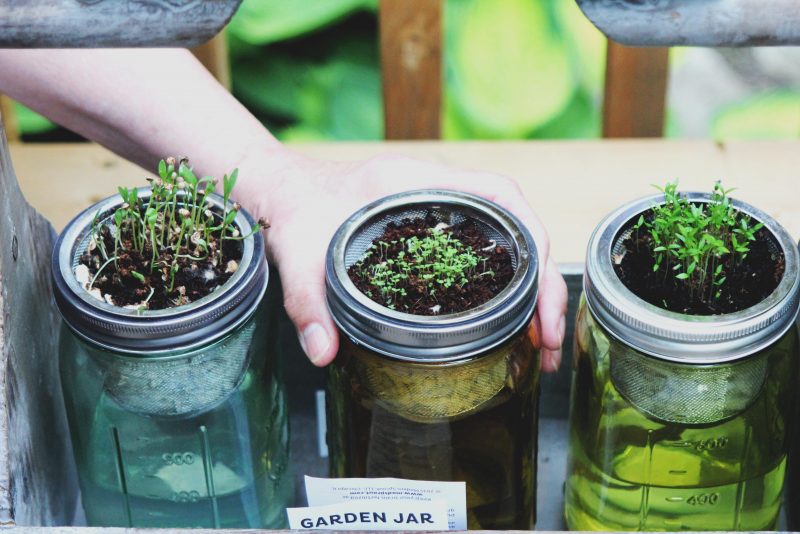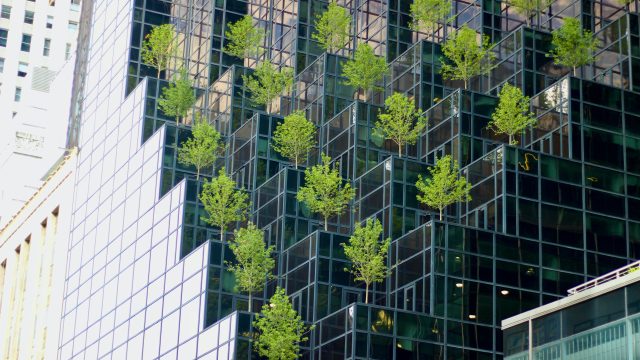Growing the green economy – in your back garden
Gardens are crucial to preserving wildlife and combating climate change. Here's how to turn yours into a green economy powerhouse!

As cities and towns around the world sweltered in this summer’s heatwave, people flocked to parks and gardens to escape the oppressive temperatures. But as well as being great places to cool down, urban gardens can also play a crucial role in helping combat climate change, protect biodiversity, and preserve crucial natural resources.
The Royal Horticulture Society (RHS) estimates that our gardens make up a quarter of the total urban area in of UK cities, and millions of UK households have some form of green space attached, be it a front yard, a back lawn, or an allotment - so there's a lot of potential for greening out there. Here are our top tips to making sure your garden is part of a flourishing green economy.
Have more plants in our gardens
For our cities, domestic gardens can be the equivalent to an air-conditioning system, keep things warm in the winter and cool in the summer. The shelter of trees and hedges can act as insulation in colder months, protecting properties from wind and rain, and bringing down heating costs and energy consumption. Place evergreen shrubs and bushes carefully around your property to reduce the speed of air movement reaching your building - but make sure you don’t create any unwanted wind tunnels directed towards your house.
Vegetation can also cool things down in the summer. Shade from urban trees prevents strong sunshine from heating up concrete and tarmac, helping to mitigate the “urban heat island” effect, while green roofs and green walls keep buildings cool and reduce their air conditioning usage – further cutting the amount of waste heat released into the air.
While larger plants and trees can clearly have benefits, concerning figures released by the RHS found that nearly one in four UK front gardens are entirely paved, and over five million don’t have any plant life at all. London was the worst culprit, and the impact of this is already raising urban temperatures.
As well as controlling heat, urban plants and trees are crucial to improving the quality of the air we breathe by scrubbing carbon dioxide and other pollutants out of the air, and provide shelter and sustenance to bees, insects, animals and birds that make up crucial urban ecosystems.
Water use
Hotter, drier summers are already on the rise around the world. Great, right? Well, yes, for any sun lovers out there, but this could have a knock-on effect for our gardens — which in turn will continue to affect our environment. So, what should you do? If you don’t already have one, get a water butt. If you do have one, add another! Catching rain water to use on your floral displays and lawn will help you minimise your mains water usage, thus helping the environment and cutting your bills.
With the proportion of household water used in the garden increasing by over 30% when temperatures rise, a water butt can be an effective tool — especially with hosepipe bans becoming more regular. Another way to cut your water usage is by re-using any ‘grey water’ which has previously been used to wash dishes or have a bath.
Composting
Eco-gardening is essential to combating climate change, and adding compost to your soil can provide crucial nutrients and microorganisms to the earth – leading to a healthier garden all round. If you want to cut costs too, instead of buying compost, you can also use kitchen scraps, so long as it’s not meat or fish. This will also reduce your household waste transported to landfill.
Composting can effectively reduce greenhouse gas emissions, especially methane, by reducing the need to use chemical fertilisers and pesticides. It also helps soils hold carbon dioxide and provides a nutrient-rich environment for plants and insects to flourish. However, it’s important to carefully maintain your composting or it may reverse the desired effect.
Grow your own vegetables
For the ambitious gardeners out there, why not turn part of your garden into your own mini-allotment? Vegetables, potatoes and salads are all cheap and surprisingly easy to grow, and nothing can beat the satisfaction (and taste!) of food you’ve grown yourself.
Self-grown food has numerous benefits for the climate. The average distance commercial food travels before it reaches your plate has been estimated at a staggering 1,500 miles, requiring huge investments of fossil fuels to transport and refrigerate. Replacing just 20% of shop-bought food with home grown produce can reduce your carbon footprint by up to 30kg of C02 each year.
Not only this, but growing your own food allows you to know that it’s free of chemicals, pesticides and fertilizers, avoids any unnecessary packaging, and saves you money from your shopping list.
Conclusion
The benefits of building a thriving green economy in your back garden are clear – cleaner air, lower bills, cool spots during heatwaves, and maybe even some delicious fresh vegetables. And the health impacts of working in the garden are clearer than ever, with regular gardening linked to reduced risks of heart attacks, strokes, depression and stress. But they’re great ways to contribute to the wider green economy too, by providing refuges for wildlife, reducing carbon emissions, cooling our towns and cities, and fighting climate change. So if the green economy begins at home – what better place to start than in the garden?
Jamie Roberts, Suttons
Image credit: Janelle Hewines on Unsplash


